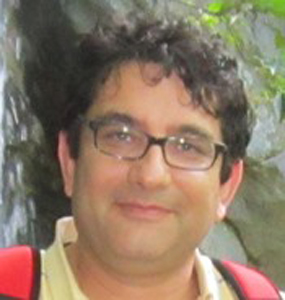Program Information
Molecular Dynamics Simulation of DNA Damage Induction by Ionizing Radiation
R Abolfath, D Carlson, Z Chen, R Nath, Yale Univ. School of Medicine, New Haven, CT
TH-F-105-2 Thursday 2:00PM - 2:50PM Room: 105Purpose: To present a multi-scale simulation of early stage of DNA damage by the indirect action of hydroxyl (OH) free-radicals generated by electrons and protons in a real-time animation and to present a comparison of the ratio of the total DNA double strand breaks induced by proton and electron tracks.
Methods: The computational method comprises of interfacing Geant4-DNA Monte Carlo (MC) with ReaxFF molecular dynamics (MD). A clustering method was employed to map the coordinates of OH-radicals extracted from the ionization track-structures simulated in 1 cm³ of continuous water onto 10¹⁹ of
2.6*2.6*6 nm³ simulation voxels (SV) filled with DNA and water molecules. The MD simulation sampled out of a large population of SVs provides the time evolution and chemical reactions and the energy-landscape accounted for ensemble of DNAs surrounded by OH and water molecules. Such computational approach allows first principle enumeration of the DNA-lesions induced by ionizing radiation.
Results: We present cascade of chemical reactions between OH-radicals and DNA induced by beam of electrons and protons. As a result of ionization of water molecules in the surrounding environment MD simulation reveals broken bonds and identify chemical pathways for carbonyl- and hydroxyl-hole formation in the sugar-moiety rings, nucleotide-nucleotide hydrogen bond disruption, and nucleotide structural damage. We trace the dynamics of OH and demonstrate the interaction among them and DNA. We find 5% and 20% of the electron and proton track, respectively, populate SVs with at least one pair of ions, capable of forming DSBs. Taking into account the realistic ion distributions, we find that the ratio of the total DNA double strand breaks induced by a single proton and electron track is approximately 4.
Conclusion: The first-generation of hybrid MD-MC method developed recently in our group allows comparison between the DNA damage induced by beams of electrons and protons.
Contact Email:


